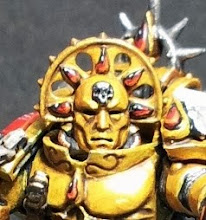Note: This post was first drafted about 2 weeks ago, and since the events of the Hong Kong Open, my understanding of kendo has since been subtly altered. I'm putting this up on the blog anyway to track the progression of my understanding of kendo.
This blog has, of late, been woefully neglected. Apologies to those who've actually been waiting for a new post. There are any number of reasons for this, not least of them being training for a big kendo tournament in Hong Kong later this week. It's the first time I'll be participating in any sort of serious international tournament (the friendly tourney with Singapore last year doesn't count) so I'm feeling a bit like a wee minnow chucked in a big, big pond. So, I figured now's a good time to take stock of where it feels like I presently stand in kendo for future reference. Something to look back on and laugh over far in the future when the glorious day comes that I (successfully) bear two swords in tournament...
Fighting in the tournament arena (shiaijou, 試合場) is an extremely different experience from the brief, fleeting duels in a crowded dojo. Granted, the objective (i.e. take ippon) is the same, but the criterion are far, far more stringent. I know for a fact, I've taken ippon many times in the dojo, but every one of them would have been worthless in a tournament. So what does ippon in a tournament take?
Well, as I understand it, a valid strike in kendo, known as yuuko datotsu (有効打突), comprises three main elements:
1. Seme (攻め) - This literally translates as attack, but in the context of kendo, 'approach' is possibly a better word. Broadly speaking, this describes how one moves from outside of striking distance to within striking distance. There are any number of ways to achieve this, e.g. pushing into the centre line, slapping the opponent's sword aside, slipping under the opponent's sword, charging and knocking the opponent off balance, to name a few. Seme is also a spiritual assault, breaking your opponent's spirit with such things as kiai, the resoluteness of your stance, and the constant application of pressure.
2. Ki, ken, tai ichi (気剣体一) - This translates roughly as striking with your spirit, your sword and your body as one. Practically, by spirit we mean shouting out the name of your target (i.e. men (面) for head, kote (小手) for glove, and so on*.). The sword should strike the named target sharply with the top quarter or so of the "blade", being the side of the shinai on the opposite end of the string that holds it together. And at the same time as the shout and the strike, the right foot should stamp solidly on the floor. The foot-stamping might sound a bit odd, but when you think about it, to give a good, loud stomp, one needs to have a reasonably solid posture, and the whole body must be carefully coordinated with the strike of the shinai. If the timing of any of these elements is off, the strike simply does not count.
3. Zanshin (残心) - This could be translated literally as "remaining heart/mind", and truth be told, I consider this to be the hard bit. Zanshin, in the context of kendo, probably translates better as 'vigilance'. It begins immediately after the killing blow makes contact, from which point one's heart/mind remains firmly fixed on your opponent/victim, watchful for any further resistance or attempt to counterattack. So, even after you strike a blow where you think you've scored, you remain ready and alert for a few seconds, even if you know you've scored. On landing the cut, you most certainly do NOT make any celebratory gestures, no fistpumps, no jumping up and down, no hoots or hollers, you just level your blade against your opponent, quick as you can and be ready to strike again if the need arises. Innumerable points in kendo tournaments have been cancelled, regardless of how perfectly the cut was executed, simply because of a lack of zanshin.
Yesterday, I learnt that zanshin is where I fall short. The execution of zanshin, as I found out, demands that there isn't a shadow of doubt on the part of the kendoka. I now know that, though I am capable of landing a clean cut on my opponents, from the perspective of the judges, I'm not following through enough, i.e. not enough zanshin. I find it's not an easy thing to show zanshin, at least not to the exacting standards of kendo, not while the rush of executing a good cut is addling my mind, and especially when, from the corner of my eye, I see one judges hand go up, then another judge cancel the point.
Well, now I'm aware of the problem, there's only one thing for it: Fight MORE... There will definitely be a blog post reflecting on what happens in Hong Kong this weekend... Before then, I suppose it can't hurt to do a little studying on what passes for zanshin in Japan:
Holy hell, that speed...
* The actual name of your target doesn't count, i.e. You can't whack me over the head and shout at the top of your lungs: "CHEEEEEENG!"
Monday, March 22, 2010
Friday, March 19, 2010
I aten't dead
No, really. I know I've been tres slow updating this blog of late, but I've some great big posts in the pipeline, mostly kendo-related, seeing as I just got back from a tournament in HK (in which I was thoroughly murdered. More on that later.) But yah, do bear with me a little longer, I'll see what I can throw together...
Subscribe to:
Posts (Atom)

